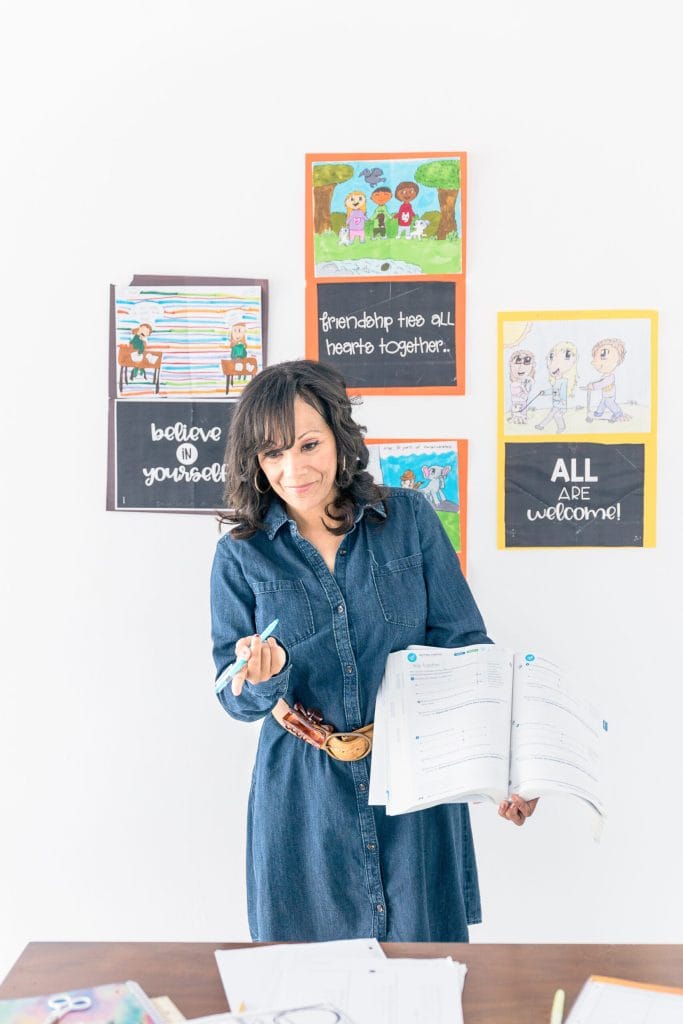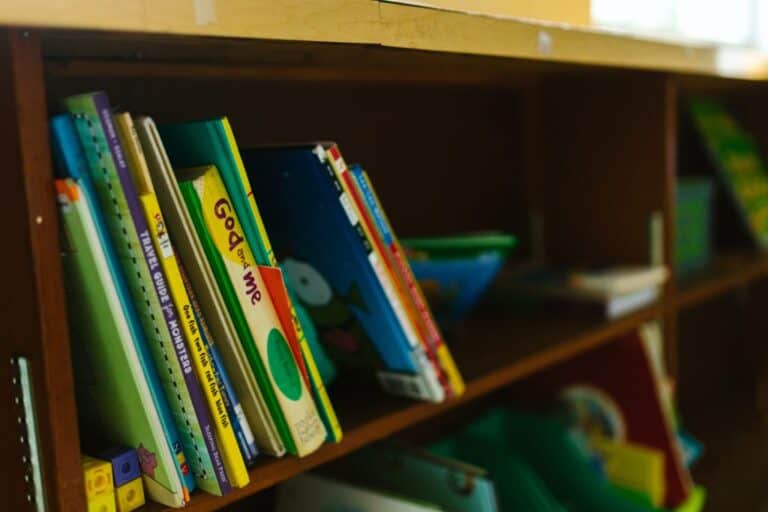How To Teach An Older Child To Read: A Step-By-Step Guide
We may earn money from the products/companies mentioned in this post. As an Amazon Associate I earn from qualifying purchases. For more information, read our Terms & Disclosures.
How To Teach An Older Child To Read. * This post may contain affiliate links*
You’ve probably heard it a million times… children learn at their own pace.
But when your child isn’t quite catching on to reading the way you anticipated, what do you do?
And more importantly, how do you teach an older child to read?
You might be surprised to hear that I’ve been in your shoes so ill be sharing handful of tips and techniques that turned things around for us.
Or, for short… this is your guide on how to teach an older child to read.
Back when my son turned nine, he was still struggling to read.
With his peers breezing through Harry Potter, my boy was stuck in the world of basic phonics.
Talk about a blow to a parent’s heart…
So, what did I do? Did I bury my head in the sand or find a solution?
Well, you’re here reading this, aren’t you? 😉
So, let’s get down to the nitty-gritty, the brass tacks, the heart of the matter… how can you help your older child conquer the world of words?
The Importance of Reading
Can we take a moment to acknowledge just how important reading is? And it’s not just about getting good grades or acing standardized tests. No, the importance of reading goes way beyond academics.
Reading opens up new worlds, fosters creativity, and helps us develop empathy.
It allows us to travel without leaving the comfort of our homes, live a thousand lives, and gain knowledge on many topics.
Or, for short… it’s a key that opens the door to the vast treasures of knowledge and imagination.
And were you aware that reading is also vital for daily life tasks? From reading road signs to understanding job applications, literacy is critical.
Why Older Children May Struggle to Read

Now let’s tackle this issue: why might an older child struggle to read?
While every child is unique, some common issues can make reading a challenge. These include undiagnosed learning differences like dyslexia, lack of exposure to reading, or even a lack of confidence due to previous failures.
Remember my son? He had a late start in reading and was feeling left behind.
It’s a rough place to be, but understanding the root of the problem was our first step toward solving it.
The Different Stages of Reading
The key to teaching an older child to read?
Understanding their reading development stages and tailoring activities to fit.
Sounds straightforward, right?
But trust me, it took me quite some time (and a lot of trial and error) to figure it out.
You know, it’s like making a puzzle.
You’ve got different pieces
- decoding activities…
- phonics teaching…
- …not to mention, adjusting instructional techniques and it’s all about figuring out how they fit together!
So, let’s start with the first piece of the puzzle: phonemic awareness.
Now, this is super important for our older kiddos who are struggling with reading.
Sit with them, break down words into their individual sounds, and let them play around with these sounds.
It’s like music, but with words.
One minute they’re blending sounds; the next, they’re segmenting them. Suddenly, they start noticing the slight difference between words like “fresh” and “flesh.”
Then, it’s all about phonics, which is like learning a secret code between letters and their sounds.
In my journey, I’ve found that multisensory activities are a hit!
Imagine tracing letters in the air while saying their sounds or matching pictures to their starting letters. It’s like learning but with an added fun twist.
Decoding is the next puzzle piece, especially for our older kids who aren’t reading yet. Picture activities that turn them into word detectives, breaking down big, scary words into manageable chunks.
Take a word like “unbelievable” or “transportation,” for instance.
Suddenly, it’s not so intimidating anymore, right?
Now, if we’re working with older students it’s all about boosting their oral language comprehension.
Think: vocab-building, comprehension skills enhancement, and a ton of discussions about the meanings of new words, real-life connections, and texts they’re learning to read.
Lastly, I’ve learned that motivation and support go a long way.
… An older child, struggling with reading, feeling frustrated, maybe even embarrassed.
That’s a tough place to be, isn’t it?
To combat this, I strive to create a safe learning environment, and I make it a point to celebrate every little achievement.
So, to sum it all up… When I’m teaching an older child to read, I work on their phonemic awareness, phonics, decoding strategies, and comprehension skills. But more than anything, I focus on making learning fun, safe, and rewarding.
How to Help an Older Child Learn to Read
Deciphering how to teach an older child to read can seem like you’re trying to climb Everest with no gear.
Been there, done that, and got the T-shirt!
Let me share a few tried-and-true pointers from my own rollercoaster journey. These are not just textbook stuff – I’ve field-tested each one of these!
Keep it Simple, Smarty!
Let’s start with the basics of teaching an older child to read – phonemic awareness. It’s the bedrock, the A to Z of reading. It helps them to pull apart and put together sounds in words.
I kick off with simple words, the ones you’d use every day, and as their confidence grows, we move on to the hard-hitters. It’s like learning to walk before you run, isn’t it?
Game on!
Remember when everything was a game as kids? Hopscotch, Hide-and-seek, Tag? Why not bring that fun and spontaneity into teaching an older child to read?
Word puzzles, flashcards, cool reading apps, and educational games, there’s a smorgasbord of options out there. Before you know it, they’ll be racing you to reading time!
Find Gold in the Everyday
Ever wondered how many nuggets of reading opportunities you can find in a single day?
- Reading a recipe while making those gooey chocolate chip cookies? Check.
- Debating over a morning newspaper article? Check.
- Scouring fun facts on social media? Double-check.
Patience & Praise
If I’ve learned one thing while teaching an older child to read, it’s that progress is a dance.
Some days you take the lead with strides, and some days it’s a shuffle backward.
But hey, that’s okay!
Patience is more than just a virtue here. It’s a must. And praise keeps their spirits up.
Phone-a-Friend (or a Pro!)
Even with your heart in the right place and the will of a warrior, sometimes the reading struggles seem to stick around. When that happens, there’s no harm in ringing in the professionals. A seasoned tutor or reading specialist can offer bespoke one-on-one support tailored for your child’s needs.
Stay the Course
Persistence, my friend.
Learning to read can feel like navigating a storm, complete with lashing rains and wild winds. But stay the course, keep your chin up, and you’ll come through. And in between, there’ll be moments of sunshine and laughter, I promise!
So, there it is ;my behind-the-scenes guide on how to teach an older child to read.
Help them to find books they will enjoy

One effective way to teach an older child to read is to help them find books they will enjoy.
I always encourage them to explore various genres and topics that interest them. By identifying their personal interests, they can find books that keep them engaged and make reading a more enjoyable experience.
I often suggest finding books with relatable characters or themes.
This helps the older child connect with the story, making it easier for them to immerse themselves in the world of the book.
Additionally, I encourage them to reach out to classmates or friends for book recommendations, as their peers may have similar tastes and can provide valuable insights into books they might enjoy.
Another helpful strategy is to consider the reading level of the books.
As an older child may need to catch up on their reading skills, I suggest selecting books that are not too challenging initially.
This will allow them to build confidence in their reading abilities, and eventually, they will be ready to progress to more complex texts.
In order to make the process of selecting books enjoyable, I sometimes attend book fairs or visit local bookstores with the older child, allowing them to browse the shelves at their own pace and choose books that appeal to them.
Additionally, utilizing online resources such as book blogs, reviews, and social media can be a great way for them to discover new and exciting reads.
i Recommend incorporating a variety of reading materials not limited to traditional books.
Graphic novels, e-books, and audiobooks can be excellent alternatives for older children who might need a different format to stay engaged and motivated to read.
Effective Teaching Methods

older children may require different approaches to learn reading skills. Here is a brief overview of some effective teaching methods that can help older children become proficient readers.
More to read: Top 5 Exciting Books for Your 10-Year-Olds to Ignite a Love for Reading
Phonics and Phonemic Awareness
One of the crucial aspects of teaching older children to read is focusing on phonics and phonemic awareness.
This involves teaching them to recognize and manipulate individual sounds in spoken words. To develop their phonemic awareness, I would incorporate activities such as:
- Sound blending: Combining individual sounds to form words
- Phoneme segmentation: Breaking words down into individual sounds
- Phoneme substitution: Replacing one sound with another to create new words
Additionally, systematic phonics instruction can be employed, where children learn to associate letters or letter combinations with their corresponding sounds.
Sight Words and Vocabulary Building
Another important component of teaching older children to read is focusing on sight words and vocabulary building. These are words that children should recognize instantly without needing to decode them. To teach sight words, I would use methods such as:
- Flashcards: Introducing and practicing sight words using visual aids
- Word walls: Displaying commonly used words on a wall or board for easy reference
- Sight word games: Engaging children in activities that help them practice and reinforce sight word recognition
For vocabulary building, expose children to a variety of texts, engage them in discussions, and employ explicit vocabulary instruction. Some strategies to enhance their vocabulary include:
- Context clues: Encouraging children to use surrounding words or sentences to infer the meaning of unfamiliar words
- Word roots and affixes: Teaching children the meaning of common word roots, prefixes, and suffixes to help them decode and understand new words
- Semantic mapping: Creating visual representations to show relationships between words and their meanings
Incorporating these methods in my teaching approach, I aim to help older children develop the necessary reading skills to understand and enjoy a wide range of texts.
Final Tips
- Patience is key: Just like learning any new skill or overcoming challenges, developing reading abilities takes time. Remain patient and remember that progress may not come as quickly as with a younger child.
- Encourage reading aloud: I’ve found that asking my child to read aloud can help develop their oral comprehension skills, which often outperform written comprehension skills. In addition, hearing the words can make it easier for them to recognize the sounds and understand their meaning.
- Break words into chunks: Teaching my child to chunk words into syllables, underline the vowels, circle prefixes and suffixes, and scoop each syllable with a pencil can help them decode words more easily and improve reading accuracy.
- Make reading a fun and engaging activity: In order to keep my child interested and motivated to read, I try to select reading materials that align with their interests and hobbies. Additionally, I can engage in discussions about the content to make it more enjoyable and relevant.
- Use a variety of reading materials: Providing my older child with different types of text, such as newspapers, magazines, and online articles, can expose them to a wide range of vocabulary and sentence structures, ultimately helping them develop more versatile reading skills.
- Consistent practice: Just like any other skill, reading requires consistent practice. I encourage my child to read regularly, even if it’s only for a few minutes each day. This can help build their confidence and increase their level of comfort with reading.
By using these tips and staying dedicated to helping my older child improve their reading skills, I can see progress over time and set them up for ongoing success in all aspects of life.
Now, I’d love to hear from you!
Have you tried these techniques or maybe you have your own unique strategies on teaching an older child to read?
Do share your stories and experiences in the comments section below.






